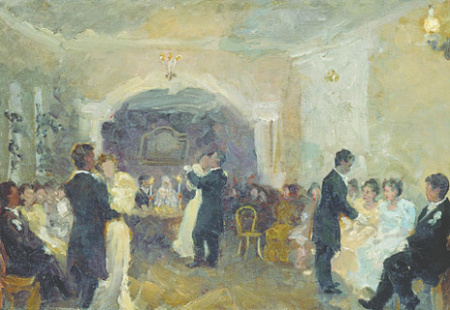
What we call good manners is far more than knowing which fork to use. As the writer Anton Chekhov noted, it’s the subtle art of overlooking another’s social misstep. This complex and often unspoken code of conduct has shaped civilizations, defined national identities, and served as a critical tool in international relations. The sheer scale of these rules can be staggering; in Ancient China, for instance, a staggering thirty thousand distinct ceremonies dictated every conceivable social interaction, from how to knock on a door to the precise way to hold a teacup. For the elite, these rules were ingrained from birth, becoming a second nature that was unthinkable to violate.
Throughout history, every nation has infused etiquette with its own unique cultural flavor, shaped by its environment, traditions, and national character. While most customs remained localized, some managed to leave a lasting, if altered, legacy. The Roman poet Ovid once advised young lovers to dip their fingers in red wine and write messages on the tablecloth—a practice long abandoned, yet the association between red wine and romance endures. In the age of chivalry, knights and ladies sharing a single plate and goblet was a sign of intimacy, a custom that faded as notions of personal space evolved. These forgotten rituals offer a window into the social paradigms of the past.
In stark contrast, some traditions remain fiercely unique, serving as powerful symbols of national identity. The Russian custom of greeting honored guests with bread and salt, a practice with ancient roots, has never been adopted elsewhere, making it a distinct marker of the culture. This highlights a fundamental aspect of etiquette: its role in defining a people. Hospitality, in particular, has long been a cornerstone of social conduct. In medieval European castles, as described by historian Johann Scherr, a guest’s arrival triggered a formal ceremony involving a welcome from the lady of the house, an offering of fresh clothes and a bath, and a seat of honor at the dinner table, demonstrating a shared European value system centered on dignified reception.
Etiquette has also been a potent instrument of power and hierarchy, a truth vividly captured by Mark Twain’s depiction of a king’s morning routine. The simple act of putting on a shirt became a prolonged, solemn ritual, with the garment passing through the hands of a dozen high-ranking lords before reaching the monarch. This was not mere inefficiency; it was a daily performance of statecraft, reinforcing the king’s supreme status and the rigid structure of the court. Such ceremonies were the visible language of power, understood by all within the system.
The drive to formalize these unwritten rules led to the creation of the first known etiquette manuals. A 13th-century Spanish text, “Disciplina clericalis,” initially guided the clergy, but was soon followed by books for courtiers and, eventually, the general public. These guides often served as tools of state policy. When Peter the Great sought to modernize Russia, he promoted a guide called “A Youth’s Honest Mirror,” which decreed that an educated person must possess three virtues: amiability, humility, and politeness. This was a deliberate effort to pivot the nation’s social norms toward a Western model as part of a grand geopolitical strategy.
While customs varied wildly from one nation to another, thinkers began to search for a universal definition of good manners. The English writer Oliver Goldsmith argued that while ceremonies differ, true politeness is the same everywhere, stemming from “common sense and goodwill.” His contemporary, Jonathan Swift, offered a more pragmatic and enduring definition: “Good manners is the art of making those people easy with whom we converse.” This simple principle transcends cultural and national boundaries, suggesting a common human desire for comfortable and respectful interaction.
In Russia, the evolution of etiquette starkly illustrated the nation’s social and political fault lines. The ancient, patriarchal code of the “Domostroy” gave way to Western-influenced manners under Peter the Great. By the 19th century, a chasm had opened between the rules for the elite and those for the common people. Books for the nobility offered detailed instructions on navigating balls, impressing influential figures, and even choosing a spouse. Meanwhile, free pamphlets for the literate masses taught them to hold their caps in their hands when speaking to their superiors and to refer to them in the third person. This system, which meticulously reinforced a rigid social hierarchy, persisted until it was abruptly shattered in 1917, when a new chapter of history began, proving that the intricate rules that govern societies are as fragile as the political orders that create them.
